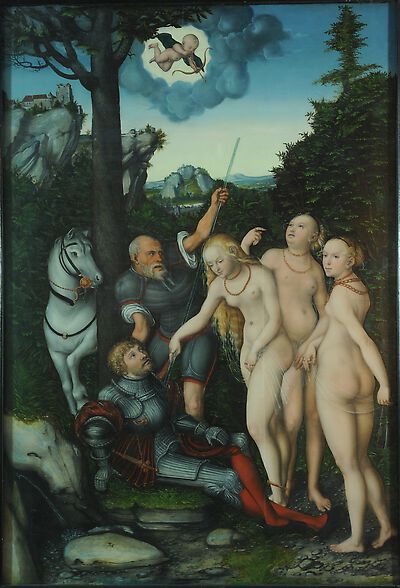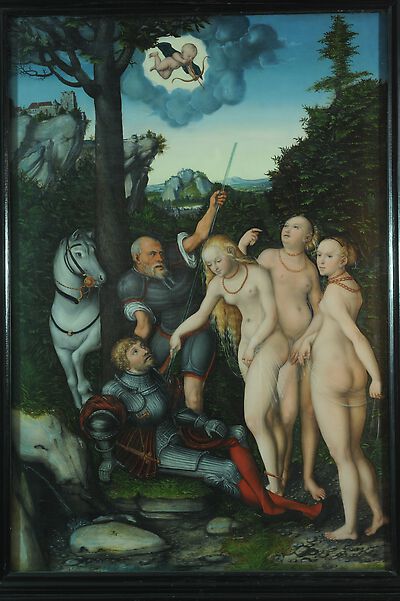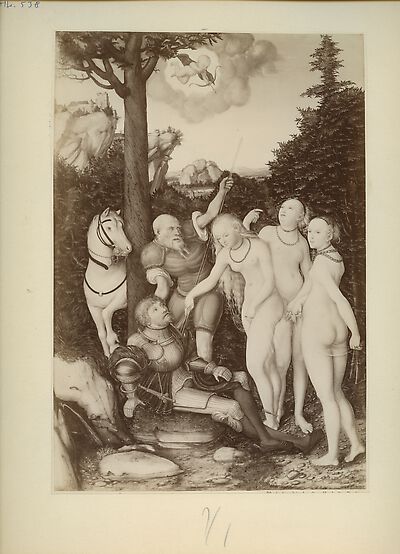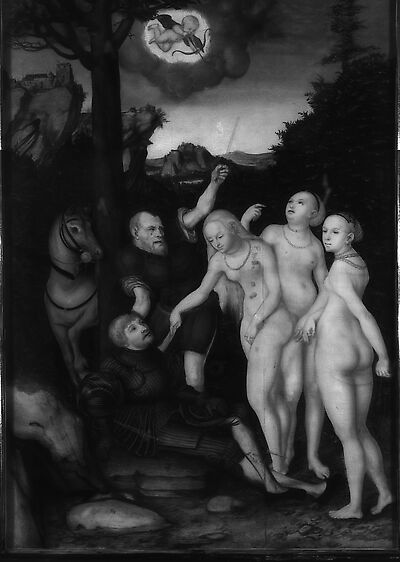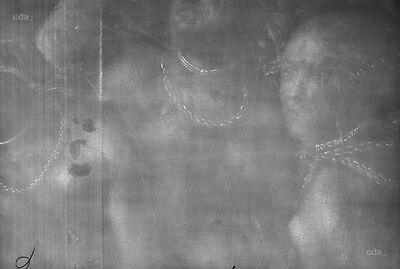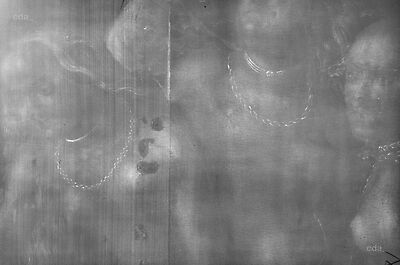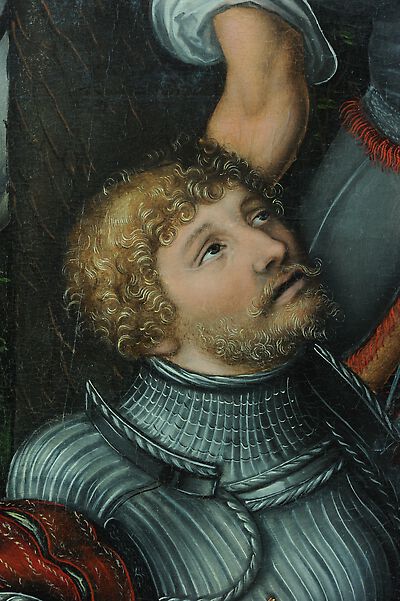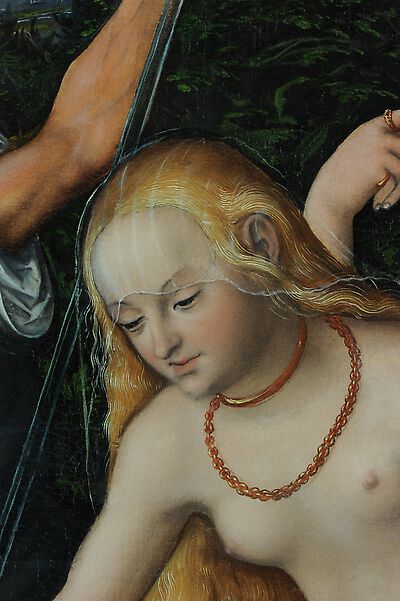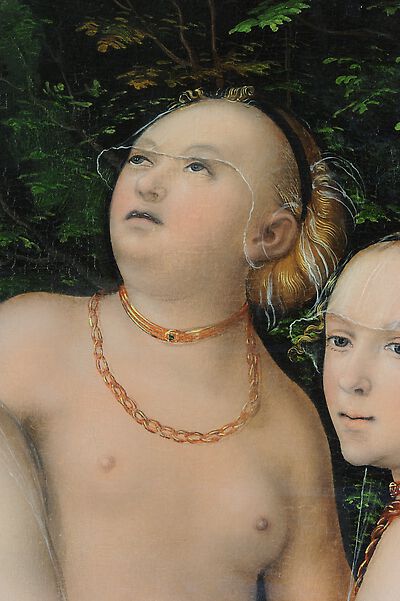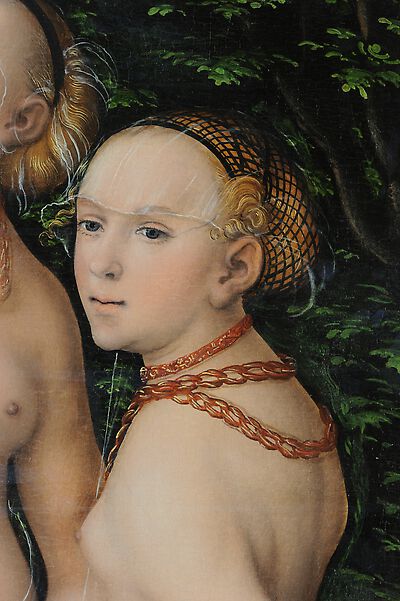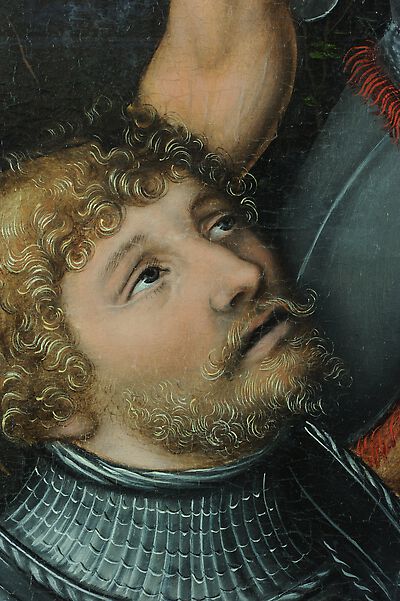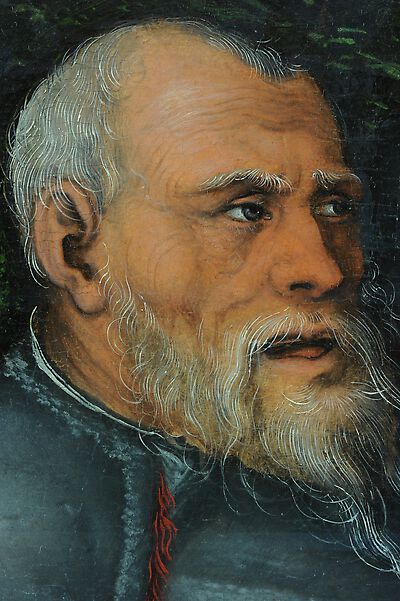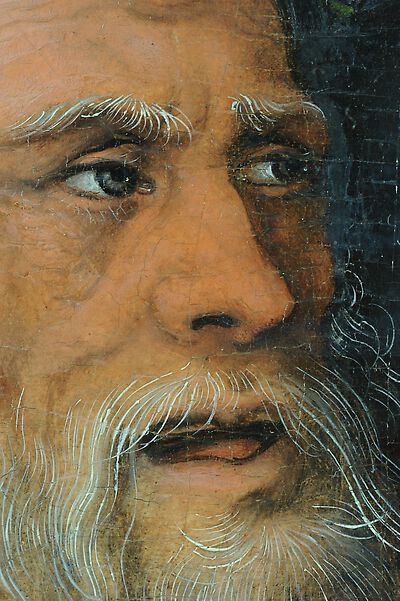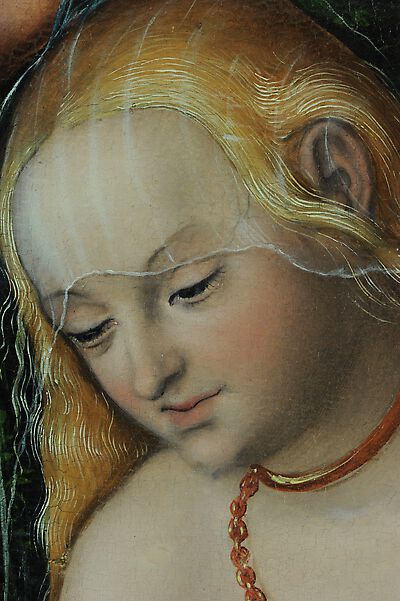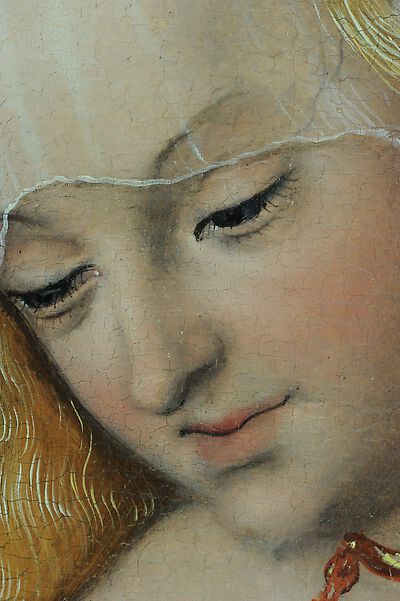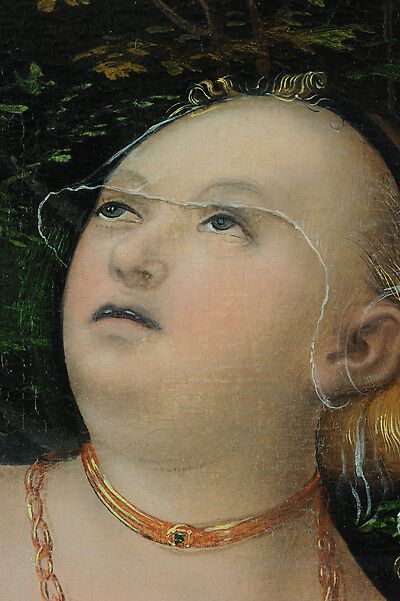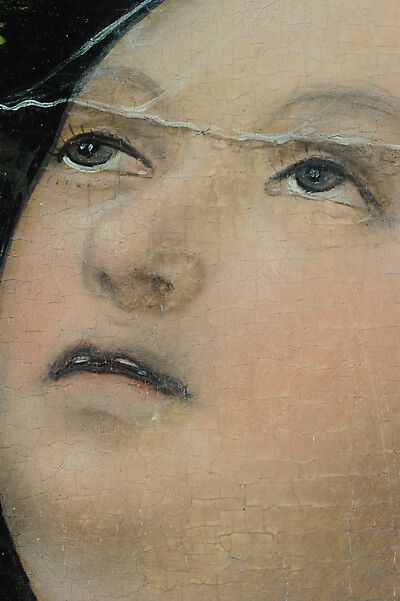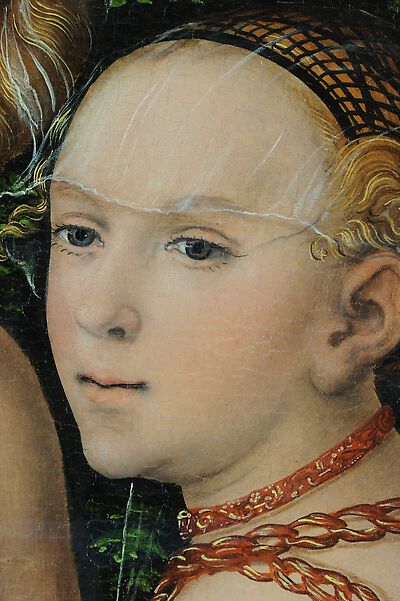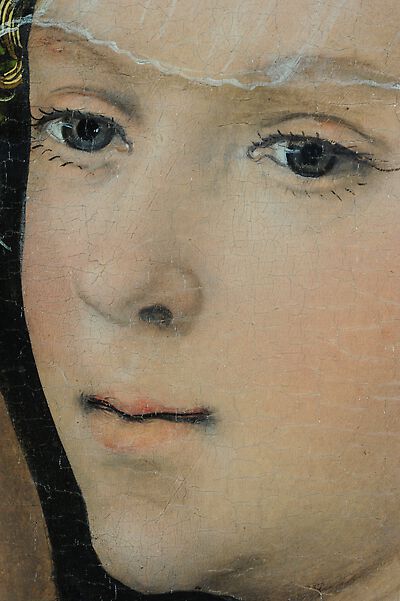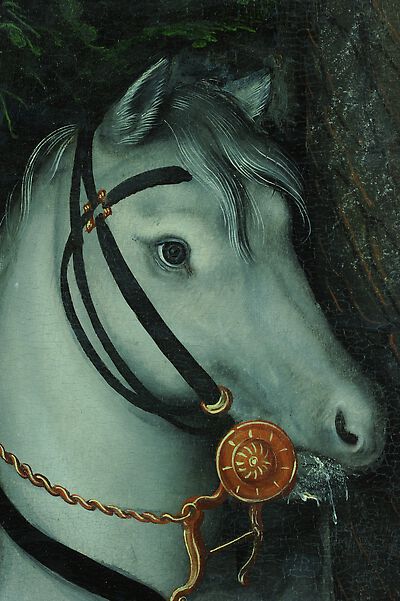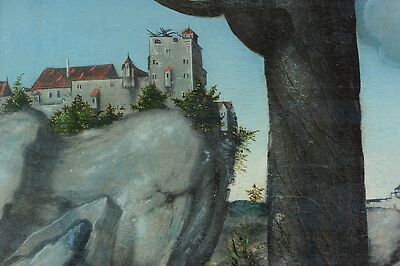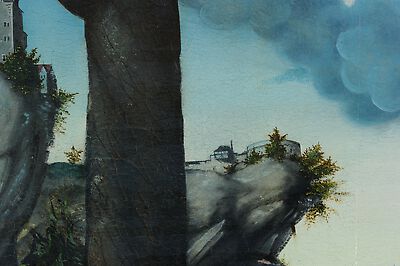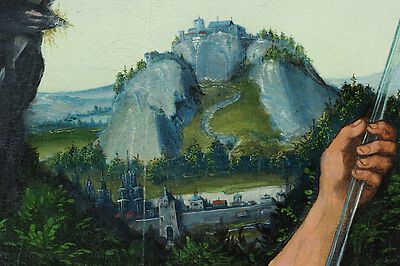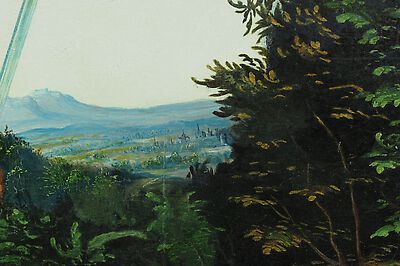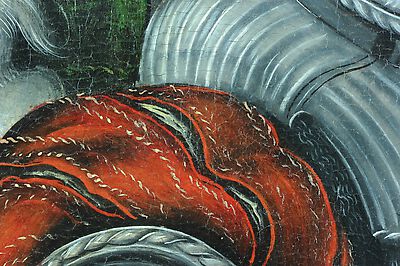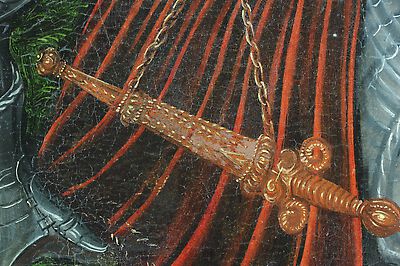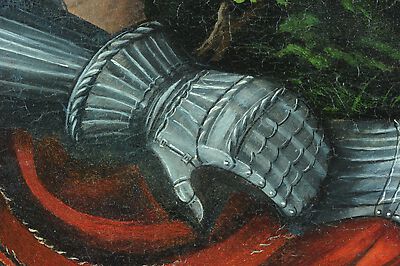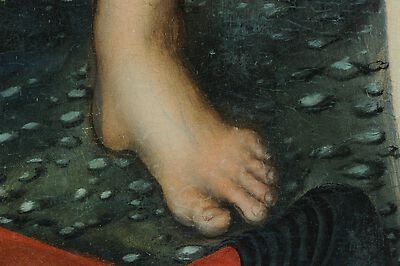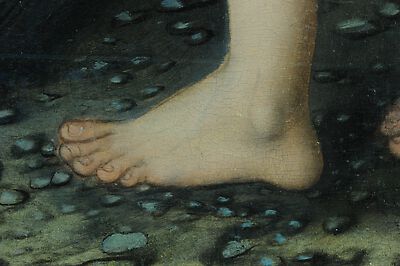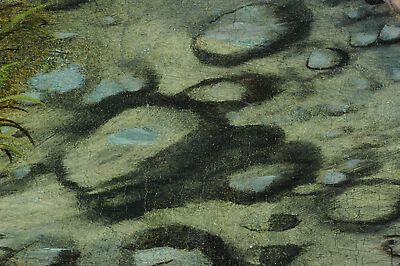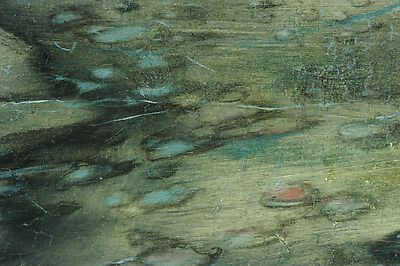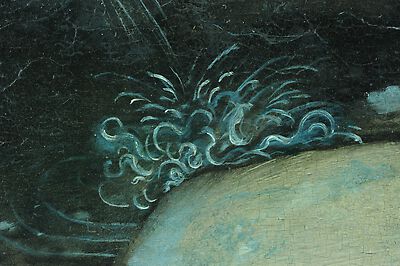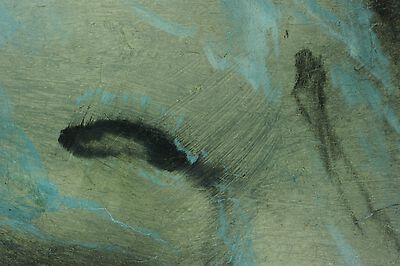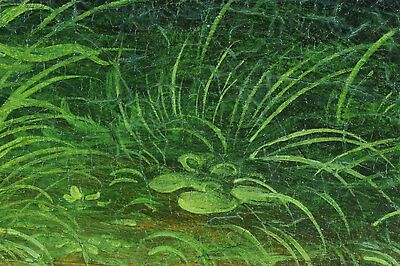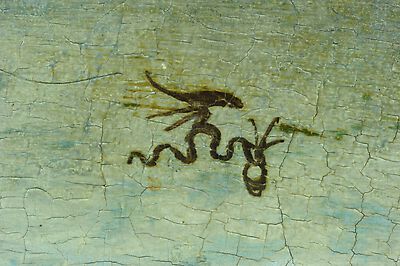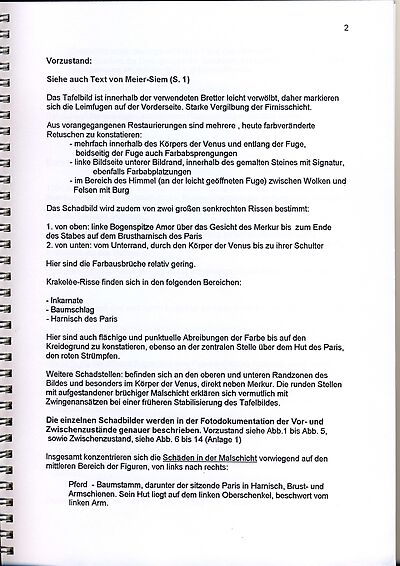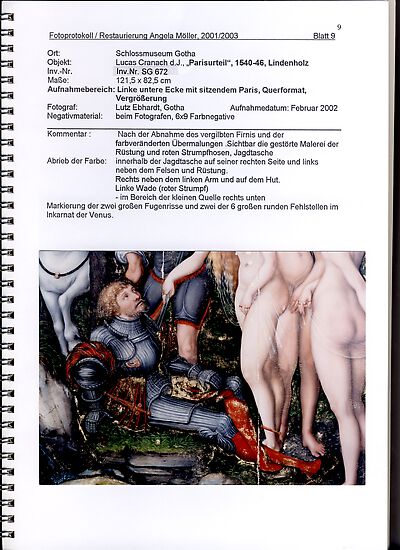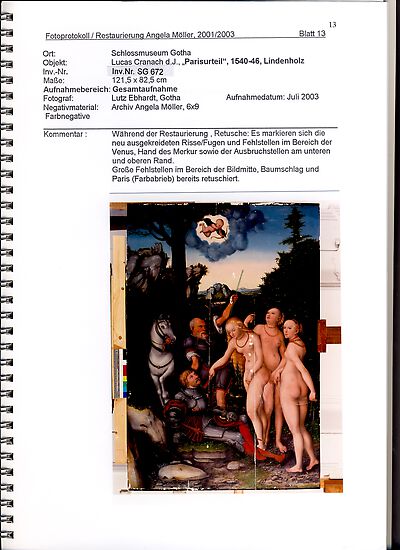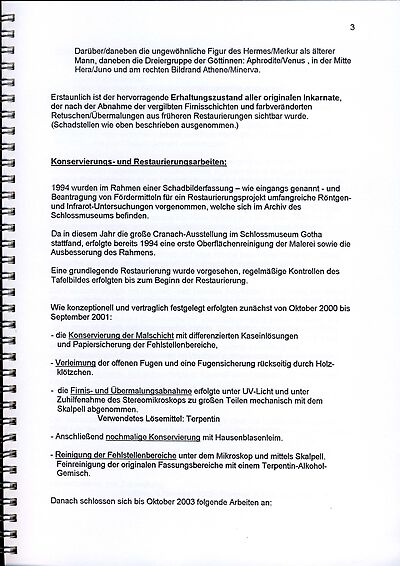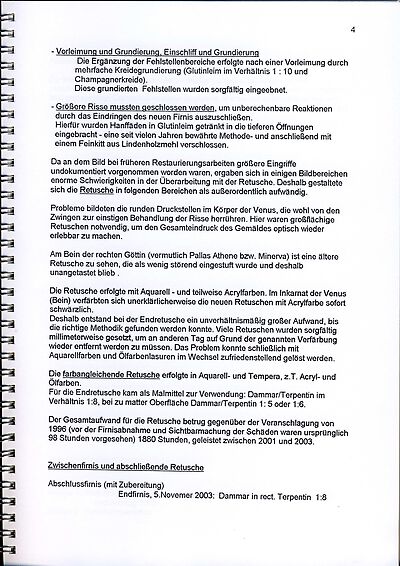| Dohe 2015 |
48 |
|
|
| Author | Sebastian Dohe |
|---|
| Title | Aemulatio, Anspruch und Austausch. Cranachs Kunst im höfischen Dienst |
|---|
| Publication | in Julia Carrasco, Justus Lange, Benjamin D. Spira, Timo Trümper, Stiftung Schloss Friedenstein Gotha and Museumslandschaft Hessen Kassel, eds., Bild und Botschaft. Cranach im Dienst von Hof und Reformation, [Exhib. Cat. Gotha, Kassel] |
|---|
| Place of Publication | Heidelberg |
|---|
| Year of Publication | 2015 |
|---|
| Pages | 43-50 |
|---|
|
| Exhib. Cat. Gotha, Kassel 2015 |
222, 223 |
66 |
Pl. p. 223 |
| Editor | Julia Carrasco, Justus Lange, Stiftung Schloss Friedenstein, Gotha, Benjamin D. Spira, Timo Trümper |
|---|
| Title | Bild und Botschaft. Cranach im Dienst von Hof und Reformation, [Gotha, Herzogliches Museum; Kassel, Gemäldegalerie Alte Meister, Schloss Wilhelmshöhe] |
|---|
| Place of Publication | Heidelberg |
|---|
| Year of Publication | 2015 |
|---|
|
| Sandner, Heydenreich, Smith-Contini 2015 |
136, Fn. 56 |
|
|
|
|
| Werner 2015 B |
166-168 |
|
4 |
| Author | Elke Anna Werner |
|---|
| Title | Fehlurteile. Das Urteil des Paris von Lucas Cranach d. Ä. (ehem. im Gotischen Haus Wörlitz) und seine Forschungsgeschichte |
|---|
| Publication | in Kulturstiftung Dessau-Wörlitz, ed., Cranach im Gotischen Haus in Wörlitz, Exhib. Cat. Wörlitz |
|---|
| Place of Publication | Munich |
|---|
| Year of Publication | 2015 |
|---|
| Pages | 163-170 |
|---|
|
| Widmaier-Picasso 2005 |
78 |
|
Pl. 29 |
| Author | Diana Widmaier-Picasso |
|---|
| Title | Picasso und Cranach der Ältere. Kunst als Lebenskraft |
|---|
| Publication | in Harald Marx, Ingrid Mössinger, Karin Kolb, ed., Cranach. Exhib. Cat. Chemnitz |
|---|
| Place of Publication | Cologne |
|---|
| Year of Publication | 2005 |
|---|
| Pages | 64-77 |
|---|
|
| Exhib. Cat. Gotha 1994 |
31 |
|
|
| Editor | Stiftung Schloss Friedenstein, Gotha |
|---|
| Title | Gotteswort und Menschenbild. Werke von Cranach und seinen Zeitgenossen |
|---|
| Place of Publication | Gotha |
|---|
| Year of Publication | 1994 |
|---|
|
| Schade, Schuttwolf 1994 |
31, 32, 45 |
1.13 |
Figs. p. 31, 32, Pl. p. 45 |
| Author | Werner Schade, Allmuth Schuttwolf |
|---|
| Title | Malerei und Plastik |
|---|
| Publication | in Allmuth Schuttwolf, ed., Gotteswort und Menschenbild. Werke von Cranach und seinen Zeitgenossen, Exhib. Cat. Gotha |
|---|
| Place of Publication | Gotha |
|---|
| Year of Publication | 1994 |
|---|
| Pages | 15-94 |
|---|
|
| Schuttwolf 1994 |
8 |
1.13 |
|
| Author | Allmuth Schuttwolf |
|---|
| Editor | Stiftung Schloss Friedenstein, Gotha |
|---|
| Title | Geschichte der Gothaer Kunstsammlungen |
|---|
| Publication | in Allmuth Schuttwolf, ed., Gotteswort und Menschenbild. Werke von Cranach und seinen Zeitgenossen, Exhib. Cat. Gotha |
|---|
| Place of Publication | Gotha |
|---|
| Year of Publication | 1994 |
|---|
| Pages | 7-12 |
|---|
|
| Exhib. Cat. Gotha 1986 |
|
|
cover ill. reverse |
| Editor | Schlossmuseum Gotha |
|---|
| Title | Das Urteil des Paris in der bildenden Kunst der DDR |
|---|
| Place of Publication | Gotha |
|---|
| Year of Publication | 1986 |
|---|
|
| Exhib. Cat. Berlin 1983 |
|
E11 |
Fig. p. 278 |
| Editor | Altes Museum, Berlin |
|---|
| Title | Kunst der Reformationzeit |
|---|
| Place of Publication | Berlin |
|---|
| Year of Publication | 1983 |
|---|
|
| Friedländer, Rosenberg 1979 |
153 |
No. 409 |
Fig. 409 |
| Author | Max J. Friedländer, Jakob Rosenberg |
|---|
| Editor | G. Schwartz |
|---|
| Title | Die Gemälde von Lucas Cranach |
|---|
| Place of Publication | Basel, Boston, Stuttgart |
|---|
| Year of Publication | 1979 |
|---|
|
| Strieder 1975 |
171 |
|
|
| Author | Peter Strieder |
|---|
| Title | Lucas-Cranach-Ausstellung in Basel (Ausst. Besprechung) |
|---|
| Journal | Kunstchronik |
|---|
| Issue | Jg. 28, Heft 5 |
|---|
| Year of Publication | 1975 |
|---|
| Pages | 165-171 |
|---|
|
| Exhib. Cat. Basel 1974/1976 |
630 |
No. 538 |
|
|
|
| Exhib. Cat. Weimar 1972 B |
|
No. 69 |
Plate 63 |
| Editor | Schlossmuseum Weimar |
|---|
| Title | Lucas Cranach 1472-1553. Ein großer Maler in bewegter Zeit |
|---|
| Place of Publication | Weimar |
|---|
| Year of Publication | 1972 |
|---|
|
| Lilienfein 1942 |
|
|
Fig. 108 |
| Author | Heinrich Lilienfein |
|---|
| Title | Lukas Cranach und seine Zeit |
|---|
| Place of Publication | Bielefeld |
|---|
| Year of Publication | 1942 |
|---|
|
| Friedländer, Rosenberg 1932 |
90 |
329 |
|
|
|
| Heyck 1927 |
81, 95, 112f. |
|
Fig. 93 |
| Author | Eduard Heyck |
|---|
| Title | Lucas Cranach |
|---|
| Place of Publication | Bielefeld |
|---|
| Year of Publication | 1927 |
|---|
|
| Flechsig 1900 A |
|
No. 95 |
|
| Author | Eduard Flechsig |
|---|
| Title | Cranachstudien |
|---|
| Volume | 1 |
|---|
| Place of Publication | Leipzig |
|---|
| Year of Publication | 1900 |
|---|
| Link |
page/n5/mode/2up |
|
| Exhib. Cat. Dresden 1899 |
|
|
|
|
|
| Lippmann 1895 D |
|
|
|
| Editor | Friedrich Lippmann |
|---|
| Title | Lucas Cranach. Sammlung von Nachbildungen seiner vorzüglichsten Holzschnitte und seiner Stiche |
|---|
| Place of Publication | Berlin |
|---|
| Year of Publication | 1895 |
|---|
|
| Parthey 1863-1864 |
699 (Bd. 1) |
No. 15 |
|
| Author | Gustav Parthey |
|---|
| Title | Deutscher Bildersaal. Verzeichnis der in Deutschland vorhandenen Oelbilder verstorbener Maler aller Schulen |
|---|
| Volume | 1, 2 |
|---|
| Place of Publication | Berlin |
|---|
| Year of Publication | 1864 |
|---|
|
| Schuchardt 1851 C |
65 |
|
|
|
|
| Böhler, Steinmeyer |
11 |
|
|
| Editor | Julius Wilhelm Böhler, Fritz Steinmeyer |
|---|
| Title | [Auction Catalogue] |
|---|
| Place of Publication | Lucerne, New York, Berlin |
|---|
|
